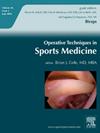Single Stage Minced Cartilage Repair
Abstract
Cartilage injuries are notoriously difficult to treat and do not heal spontaneously. The available repair methods can be expensive and often provide an inconsistent clinical and biological outcome. The use of autologous or allogeneic particulated cartilage has shown promise in recent years. Chondrocytes can migrate from minced cartilage and facilitate clinical cartilage repair in one-step procedures. Four different techniques have been described in the literature: “The Cartilage Autograft Implantation System” (CAIS) is cartilage biopsies cut into 1- to 2-mm fragments and implanted in cartilage defects embedded in a polymer scaffold. “The DeNovo NT Natural tissue graft” is allogenic particulated juvenile cartilage from donors under the age of 13. The cartilage is cut into 1 mm3 dice and implanted in cartilage defects embedded in fibrin glue. “Autologous minced cartilage” is cartilage biopsies cut into 0.25-0.5 mm3 chips, embedded in fibrin glue and implanted in chondral or osteochondral defects. The technique can be used with or without concomitant bone grafting. In the “augmented autologous minced cartilage” technique, a bioactive component is added to augment the repair process. The different minced cartilage repair techniques have shown a great biological repair potential and provide clinical benefits. The techniques are easily applicable at a low cost, and they provide the surgeon with an alternative to marrow stimulation and chondrocyte expansion and transplantation. The clinical evidence is still limited, and further studies should be performed to establish the clinical efficacy of minced cartilage procedures.

 求助内容:
求助内容: 应助结果提醒方式:
应助结果提醒方式:


